Fuel Cells (FC) are electrochemical devices that transform hydrogen and oxygen to obtain water and electrical power through an oxidation chemical reaction. FC are known as gas-to-power (or hydrogen-to-power) technologies. Unlike batteries, the reactive compounds are consumed continuously and produce electricity on-site:
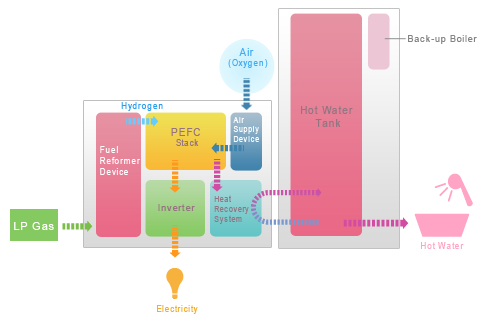
Figure: gas-fuel cell that produces hydrogen instantaneously and produces el. and heat in residential units in Japan https://www.j-lpgas.gr.jp/en/appliances/
FCs are made of stacks that are formed by cells. The maximum generated electrical current and voltage depends on the cells and stacks configuration.
Usually, pure hydrogen obtained using previous reforming processes or electrolysis is supplied to the FC, whereas some types of them include the hydrogen generation process internally, allowing the use of fuels such as methanol or methane.
The applications of FCs are closely related to the operating temperatures and the availability of the reactive compounds. The predominant technologies in the market are:
• Proton-Exchange Membrane Fuel Cell (PEMFC). Based on platinum compounds. Their working temperatures are under 150°C. High-purity hydrogen is needed. PMFCs allow quick variations in the generated power and a high number of stops and starts, which is positive, especially in transport applications.
• Solid Oxide Fuel Cells (SOFC). Based on zirconium and nickel elements. SOFC works at very high temperatures in the range of 900°C, which allows the direct use of methane. This technology is designed for stationary applications with a low number of stops and starts, such as power generation or building cogeneration. (Such as the one in Japan above).
• Phosphoric acid fuel cell (PAFC). The operational temperature is in the range of 190-250°C, allowing the employment of certain reformed gases. The main application of PAFC is building cogeneration.
The costs of FCs technologies are high due to the low market penetration, being in the range of 2000 €/kW depending on the kind and size of the system. However, high growth rates in the development and adoption of FC are foreseen in the next years.
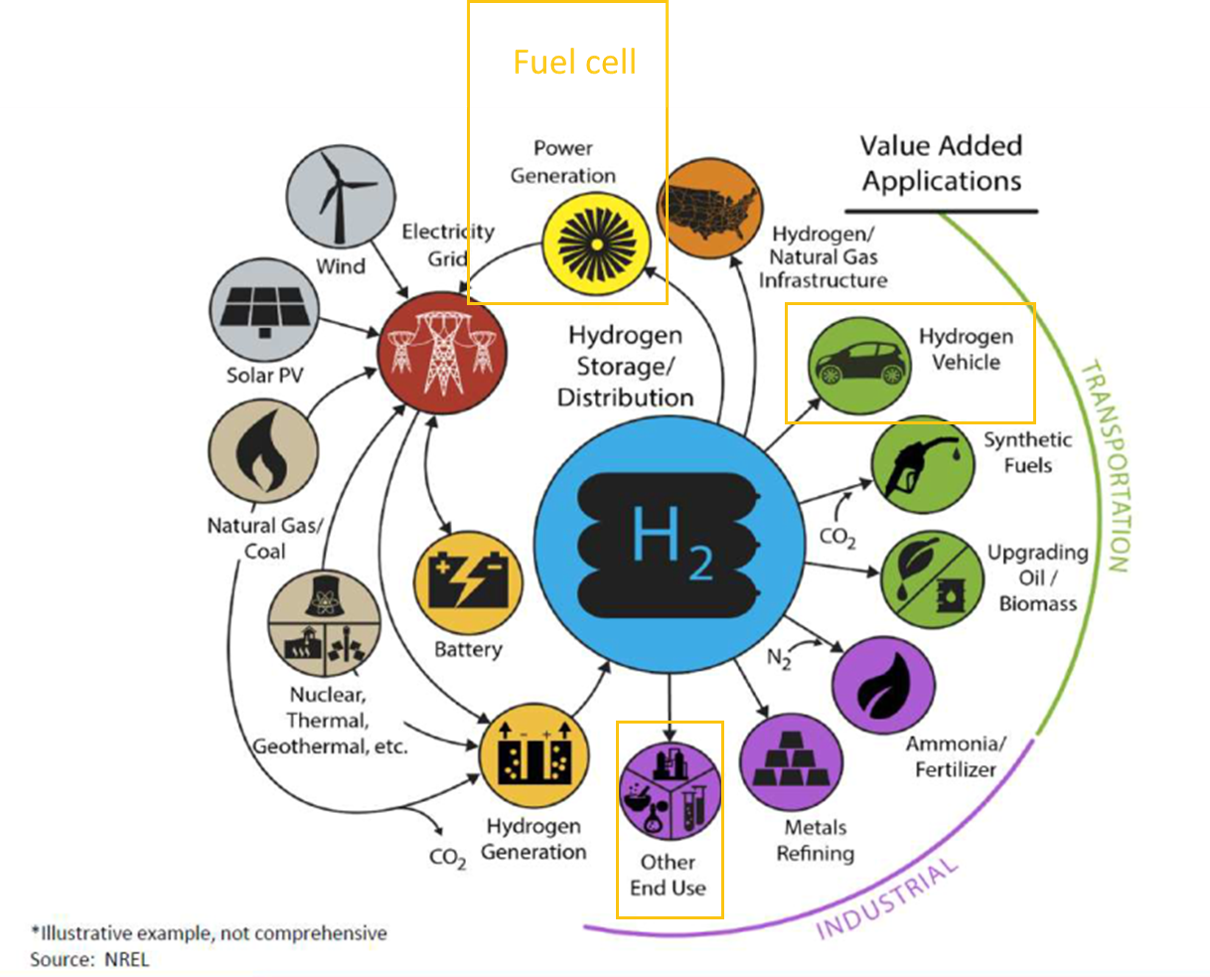
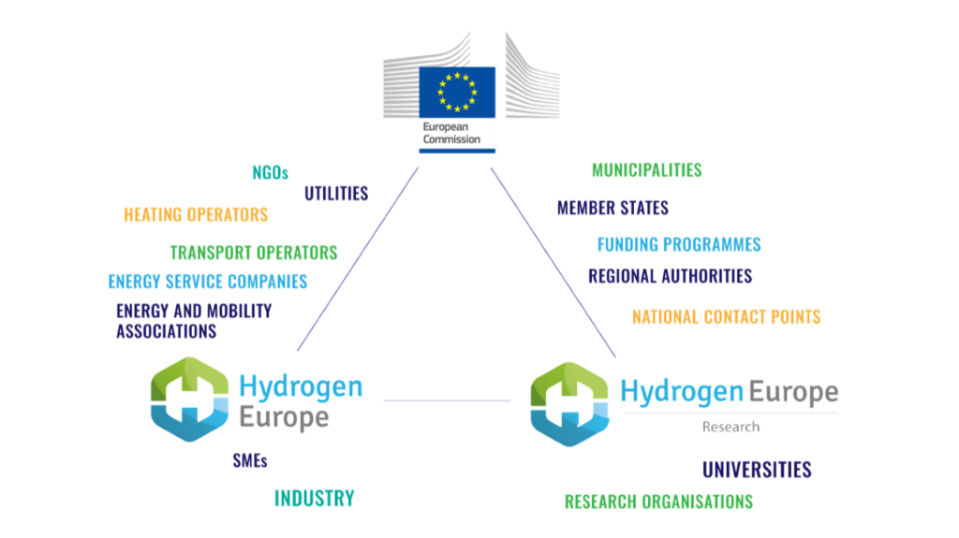
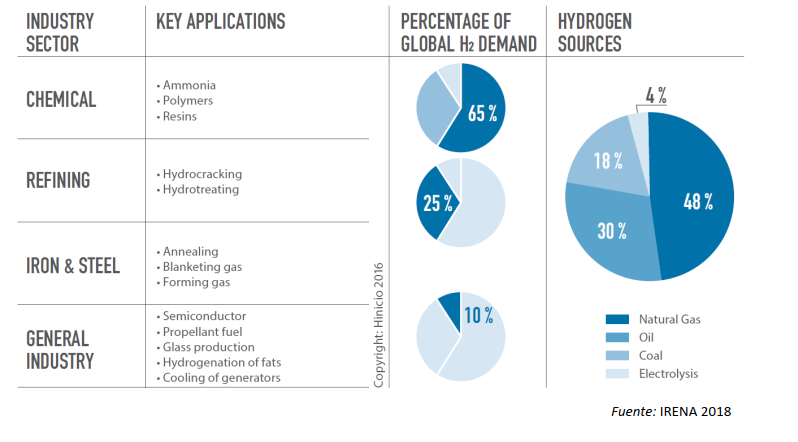
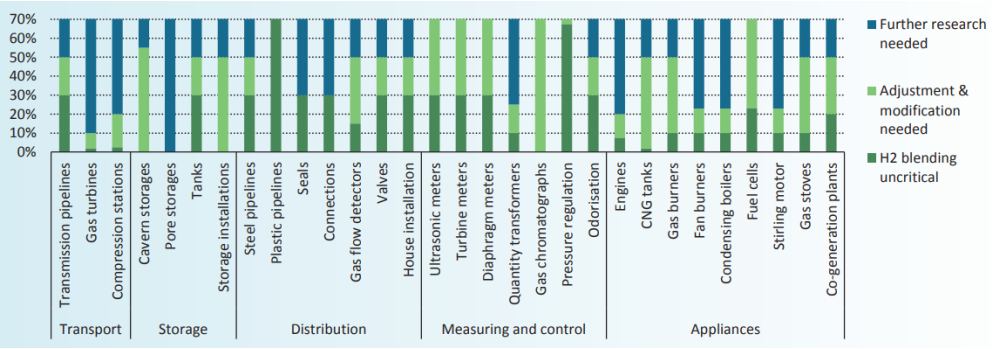
Comments ()